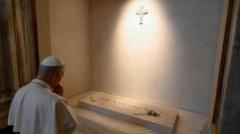In a world captivated by the ceremonial entry of a new pope, one of the most profound choices is perhaps the name he will adopt. This name, like a compass, can guide the future orientations of the papacy, reflecting both historical reverence and personal significance. The tradition of selecting a papal name traces back to 533, when a new pope chose a title that diverged from his birth name to eschew pagan connotations. This tradition has since allowed each pope to honor saints or predecessors who embody attributes they wish to emphasize during their papacy.
Papal Name Selection: A Testament to Tradition and Vision

Papal Name Selection: A Testament to Tradition and Vision
As incoming popes contemplate their names, they weave history and personal significance, hinting at future directions.
For instance, Pope Francis, who picked his name in tribute to St. Francis of Assisi, focuses on humility and care for the disenfranchised, assets that are pivotal to his leadership style. Meanwhile, the reverberations of names like John Paul III or Pius XIII showcase differing potential focuses, from doctrinal rigor to a commitment to tradition. The announcement of the new pope’s name, made in Latin from the iconic papal balcony at St. Peter’s Basilica, and preceded by the words “Habemus papam,” encapsulates not only the moment’s gravitas but also the continuity of a millennia-old institution. As the church welcomes a new leader, the name chosen will resonate across timelines, offering insights into the future paths of the Catholic Church.
Patricia Mazzei serves as the lead reporter for The Times in Miami, covering Florida and Puerto Rico.
Patricia Mazzei serves as the lead reporter for The Times in Miami, covering Florida and Puerto Rico.






















